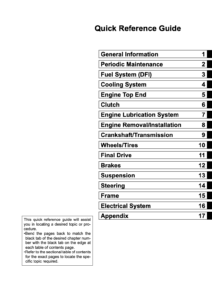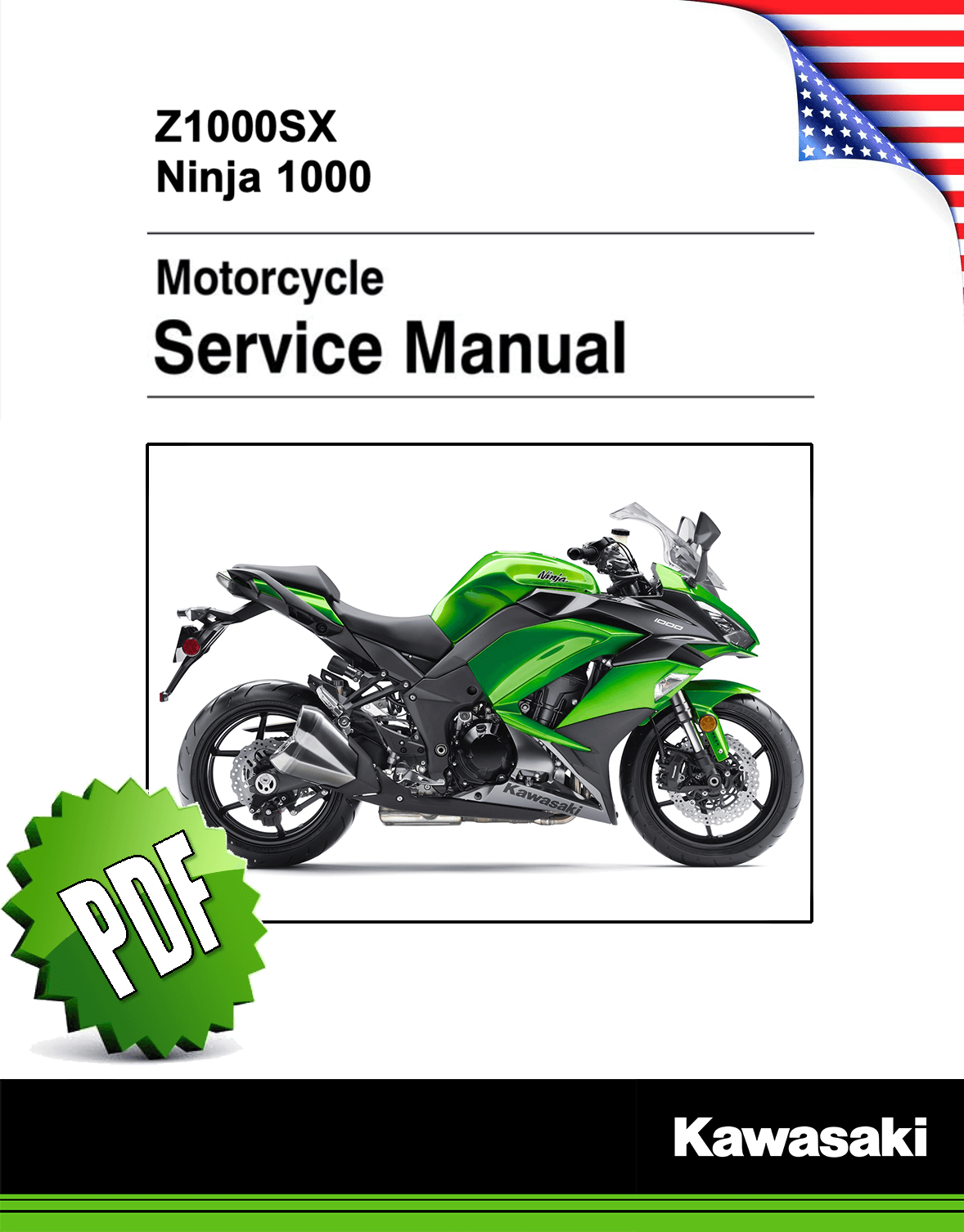Complete PDF version of the Service Manual for the Kawasaki Ninja 1000/Z1000SX/ABS 3rd gen. A MUST for every Ninja 1000 owner.
Download: Immediately after payment!
OEM Original factory workshop manual.
Models covered by this manual: 2017 to 2019
Number of pages: 737 pages
Table of contents:

This PDF repair manual can be downloaded right after the payment process in complete, on the device of your choice.
We do not offer printed manuals, for the following reasons:
- it is more eco-friendly to use a digital version
- your manual never gets dirty or greasy
- you can always choose to print the specific page(s) you need to work on your bike
- you receive your manual immediately after payment
- it is searchable

Kawasaki Ninja 1000
The Kawasaki Ninja 1000 SX (also known as the Ninja 1000, Z1000S, or Z1000SX in various regions) is a motorbike of the Ninja series produced by the Japanese manufacturer Kawasaki from 2011. Apart from the name, it has nothing in common with the Ninja 1000R built between 1986 and 1989, or with other Ninja bikes.
It is generally regarded as a fully faired sibling of the Z1000 streetfighter, with the same 1,043cc liquid-cooled, electronically fuel-injected, 16-valve four-stroke inline-four engine and aluminum twin-tube backbone frame, but with ergonomics, storage, a larger fuel tank, and other design elements geared toward the sport touring market. The Ninja 1000 also has an electronic speed limitation, not because it can exceed the 300 km/h (186 mph) agreed upon in the handshake agreement, but to maintain its peak speed the same as the unfaired and unlimited Z1000.
2017-2019 (3rd gen.)
The 2017 model gets a bigger front fairing and a taller wind screen, as well as a brighter LED headlamp that replaced the previous halogen light. The addition of a six-axis IMU that works with ABS and traction control is among the new high-level electronics, which are now known as Kawasaki’s KTRC and KCMF (Kawasaki Cornering Management Function). ABS is currently standard equipment. As a result of the additional addition, the reported wet weight has increased to 518 lb (235 kg). Compliant with Euro 4 regulations, outfitted with fresh style, and capable of competing with the 2017 Suzuki GSX-S1000F, KTM 1290 Super Duke GT, MV Agusta Turismo Veloce, and Ducati SuperSport, the bike will contribute to the resurgence of the sports-touring class.
A redesigned dash featuring a gear position indication, a variable rev limiter, and ambient temperature sensors are among the other modifications. The exhaust system was also modified to meet Euro 4 standards.
Source: Wikipedia

